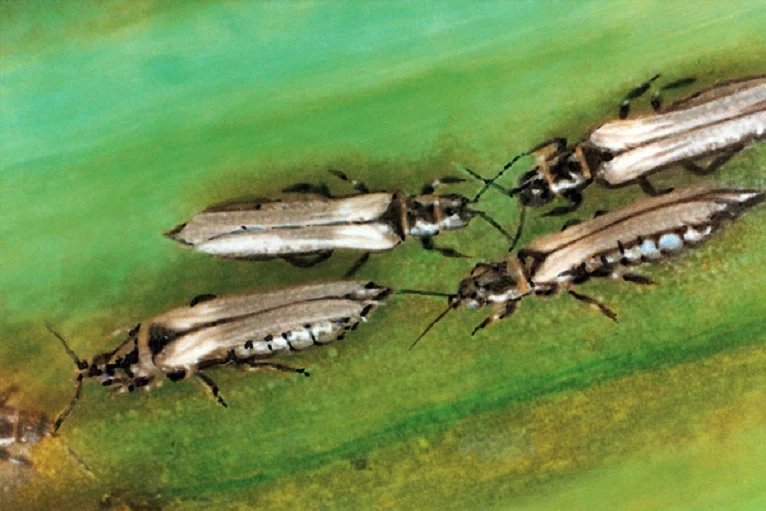
Thrips
Thrips angusticeps, Thrips tabaci
Identification
It is possible to distinguish cabbage thrips from onion thrips using some form of magnification. The wings of cabbage thrips are much shorter than for onion thrips. Also cabbage thrips are usually darkish brown whilst onion thrips are yellowish-grey to dark-grey.
Cabbage thrips overwinter in the soil as short winged flightless adults and it is this early emerging stage which is responsible for the early crop damage. Later in the summer a winged generation can arise although a percentage of these can remain to overwinter in cracks and crevices in the soil. Crops will be at greatest risk where beet crops follow an alternative host crop.
Onion thrips migrate into sugar beet crops later in the season when temperatures are higher.
Symptoms
The thrips feed by piercing the leaf surfaces and sucking up the contents of the damaged cells. They target the heartleaves as they form and before they unfurl. The resultant damage leads to a silvery brown or reddening of the centre of the beet which fail to develop and grow normally. Damage caused by thrips can be mistaken for frost damage.
In the spring of both 1996 and 1997 reports of damage attributed to thrips were widespread and further reports of damage were recorded in the cold dry spring of 2010.
Threshold
Sugar beet crops will be at increased risk when grown in the vicinity of other host crops such as linseed, oilseed rape or other brassicas for cabbage thrips or brassicas or Alliums for onion thrips.
Where pest pressure causes severe damage crops may require re-drilling especially in cold dry springs when crop establishment
is slow. With the onset of more favourable growing conditions crops can recover although maximum growth is essential at this early growth stage to ensure satisfactory yields.
Modern seed treatments can give useful protection against thrips, although in dry soils movement of the active ingredient from the outside of the seed into the roots and shoots can be limited. Growers have attempted to control this pest with one or more applications of pyrethroid insecticides.


